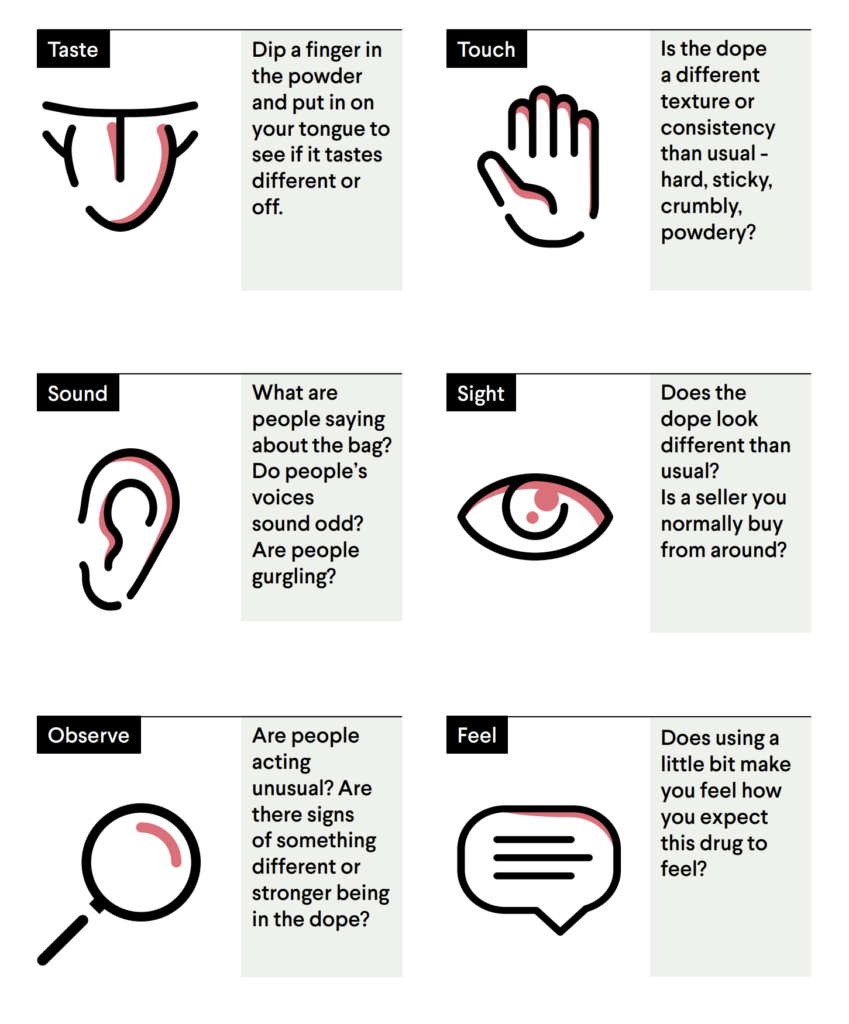It would seem that everything is simple. Intuitively clear that taking drugs alone can be dangerous. But the constructions of reason or the arguments of specialists are powerless before life. People use alone and will continue to do so. No matter what anyone would like. Let’s figure out why.
After listing the standard risks of alone drug use, I will focus on the reasons, I will show that not everything is so simple – sometimes using alone means increasing safety. And then I will cover practical tips for those who are going to use substances alone. This article owes its existence to the material from Vital Strategies – people are doing really good things there.
Risks of Using Drugs Alone

Increased Risk of Overdose: Using drugs alone significantly heightens the risk of an overdose going unnoticed and unaddressed. In the presence of others, there’s a chance someone can recognize the signs of an overdose and seek emergency medical help. When alone, this safety net is absent.
Lack of Immediate Assistance: In case of adverse reactions or emergencies like seizures or unconsciousness, immediate help is critical. Using drugs alone means there’s no one to provide or call for assistance.
Psychological Vulnerability: Certain psychoactive substances can induce states of confusion, anxiety, paranoia, or hallucinations. Without the presence of others to provide reality checks or reassurance, these experiences can become more distressing or dangerous.
Risk of Developing Unhealthy Patterns: Solitary drug use might also indicate or lead to a pattern of isolation, which is often linked with the escalation of substance use and the potential development of substance use disorders.
Difficulty in Gauging Dosage and Effects: Especially for individuals who are not experienced or are experimenting with new substances, the absence of others who might provide guidance or insight into appropriate dosages and effects can increase the risk of misuse.
Mental Health Implications: Isolation in drug use can exacerbate underlying mental health issues such as depression or anxiety, as there is no social support or interaction that can sometimes mitigate negative emotional states.
Lack of Harm Reduction Practices: In group settings, individuals might share harm reduction techniques and safer use practices. Alone, a user might not be aware of or might not apply these practices.
Awareness of these risks is vital not only for users but also for healthcare professionals, educators, and support networks. Understanding the dangers of solitary drug use can inform better education, intervention strategies, and support systems, potentially reducing the harm associated with substance use.
Why do People Choose to Use Alone?

To effectively tackle the risks associated with solitary drug use, it’s crucial to delve into and frame the experiences of individuals who use drugs by themselves. Many prefer using drugs in solitude, often for reasons linked to safety, such as:
- The heightened vulnerability to harm from others when under the influence.
- The need for a trustworthy companion during such vulnerable states, specifically someone who:
- Won’t take advantage of their incapacitated state.
- Won’t inflict harm.
- Will assist in case of an overdose.
However, finding a reliable companion every time one needs to use drugs is not always feasible. In such cases, using drugs alone can paradoxically seem like the safer choice, despite the increased risk of a fatal overdose.
When alone, individuals can experience the full impact of drugs without external distractions or the need to protect themselves from potential harm by others. This solitude enables them to fully immerse in the sensations of pleasure or pain relief without interruption.
Furthermore, using drugs in a group can often lead to expectations of sharing, which may not seem equitable for those who have worked hard to procure them.
For those known as “hit doctors” – individuals who assist with injections and are users themselves – using drugs in the presence of others often comes with the expectation that they will provide their services. Hence, they may choose solitude to avoid these demands.
What’s Wrong with Standard Messages

The standard messages and practices often circulated for harm reduction can be multifaceted and, in some cases, counterproductive.
The oft-heard directive “Never Use Alone” is a prime example of well-intentioned advice that may fall short in practice. This simplistic guidance is perceived by many as condescending and neglectful of the complex realities of drug use. It fails to address the myriad factors individuals consider when choosing to use alone, including safety concerns that may outweigh the risks of solitary use. Furthermore, not everyone has the option of a companion or a trustworthy individual to accompany them during drug use, rendering this advice impractical for some.
Similarly, the phrase “Try Before You Fly” can carry an ominous tone, suggesting unspoken dangers in the drug supply. This message doesn’t take into account the practical challenges faced by many users, such as the difficulty in finding a viable vein, especially for those with damaged veins who need time to inject safely. Moreover, the advice is less applicable to individuals with high tolerance, who may not experience the typical effects of a ‘test shot,’ particularly with delayed-effect drugs.
The call to “Flood the Streets With Naloxone” is another message that requires careful consideration. While the intention is to promote safety, such messaging can inadvertently instill fear and drive individuals into further secrecy. The reluctance to be ‘narcanned’—having naloxone administered—can lead to avoidance behaviors. It’s essential to ensure that naloxone distribution is accompanied by responsible education on its use. Misunderstandings about naloxone, especially its premature administration, contribute to the challenges faced by drug users, compounding issues like criminalization and stigma.
The nuanced realities of solitary drug use demand a more thoughtful approach to messaging and harm reduction practices. Understanding the individual circumstances and challenges faced by people who use drugs alone is key to developing supportive and effective strategies. By reconsidering the implications of standard messages and practices, we can move towards a more compassionate and pragmatic approach to drug use and harm reduction.
Practical Tips for Minimizing Risks of Using Alone

Do Your Own Research
Learn about the substances you’re using, their effects, potential risks, and emergency response measures like CPR or naloxone administration.
Gather insights from other users regarding the current drug supply. Often, different heroin or fentanyl batches can be identified by their specific stamps. Engaging in conversations about the drug’s quality on that day is crucial.
Local harm reduction services should track and publicly display information about the daily drug supply, ensuring it’s accessible to users. When consulting peers, especially those you trust, ask detailed questions:
What’s the intensity and nature of the high?
Is the effect delayed or immediate?
What duration of the drug’s effects?
Does it cause drowsiness or sleepiness?
When was it last consumed?
Use this information to decide on the amount for a test dose. Be aware of daily variations in drug potency and avoid purchasing at night to reduce the risk of acquiring substandard or empty products.
Use Your Senses

Make a Plan. Keep the Plan
- Сheck-ins for Safety: Arrange for regular check-ins with someone. Have a call during a test dose for guidance and establish a contingency plan for non-responsiveness during the call.
- Gauge the Desired Intensity of Your High: Reflect on the intensity of the high you’re aiming for. To ensure safety and desire a strong effect, first, try this amount in the company. This approach allows you to assess the batch’s strength and your reaction to it.
- Make Drug Checking: If possible check your substances for purity and unexpected additives with drug testing kits.
- Start with a Test Dose: Begin with a smaller quantity to gauge the drug’s effect. You can always do more, you can never do less.
- Have Emergency Measures Ready: Keep a cold drink or ice handy, or Naloxone for immediate response to intense effects or overdose. Some users self-administer naloxone if they sense an overly strong effect.
- Use in a Familiar Environment: Choose a safe and familiar location for use.
- Stay Near Help: Plan to be in proximity to where medical help is available after use.
- Monitor Your Tolerance: Be aware of your tolerance levels, especially if you have not used recently or are trying a new substance.
Focus on Safety
- Be cautious with drugs from new or untrusted sources
- Be wary of using free samples, as they might be unexpectedly potent.
- Don’t use anything new alone.
- Don’t change your dose alone.
- Fight the urge to use too much alone.
- Opt for less risky methods of consumption (e.g., smoking or oral ingestion over injecting).
- Ask yourself are you feeling stressed? Take deep breaths. Don’t rush.
- Mixing drugs can unpredictably increase risks, especially with alcohol or prescription medications.
Share Your Knowledge
Sharing experiences among substance users is crucial for enhancing safety for several reasons:
- Knowledge Exchange: It enables the sharing of vital information about the potency, purity, and risks of different substances.
- Harm Reduction Practices: Users can learn from each other’s experiences with harm reduction techniques, like safer ways to use or overdose prevention strategies.
- Community Support: Builds a sense of community and support, crucial for individuals who might otherwise feel isolated in their substance use.
- Learning from Mistakes: Sharing personal stories, including mistakes and consequences, can be a powerful tool for learning and prevention.
- Empowerment and Awareness: It empowers users with knowledge, potentially leading to more informed choices and awareness of risks.
This exchange of information and experiences can significantly contribute to reducing the harms associated with substance use. Anyone can do it anywhere. Here, for example, is an approximate plan for organizing a meeting to share experiences:
- Topic Selection: Choose and inform participants of the topic beforehand.
- Timing: Let the participants decide the duration, ideally between 30 to 45 minutes.
- Ground Rules: Set clear norms for behavior, engagement, and handling disagreements.
- Interactive Format: Encourage dialogue and clarifications during the session.
- Participant-Led: Have a volunteer from the group lead the discussion for 5-10 minutes.
- Compensation and Incentives: Offer payment and food to facilitators and participants.
- Open Discussion: After the initial talk, open the floor for further discussion and input.
- Next Steps: Conclude by choosing a topic and facilitator for the next skillshare.
Additional skillshare topics can include overdose prevention, safe drug use in groups, STI prevention, drug mixing, consumption styles, navigating medical systems, and experiences with medication-assisted treatment.
Final Thought

Well, this is not an easy topic and I was torn by slightly polar views, which have one goal but a different perspective. One of them is formal and medical, the other is more close to real life and the problems of real people. I have tried to balance them in this article.
No matter how easy it is to say – “Do not use alone”, people will not always follow this advice. And sometimes using alone means putting yourself in less danger, no matter how paradoxical it may be. Nevertheless, I will not get tired of repeating this phrase, because it should sound for those cases where it is suitable and will reduce the harm.
Otherwise, I have strong faith in the willpower and intelligence of humans who, in the most difficult situations, can create conditions, plans, and safety nets to preserve health and the value of life.




